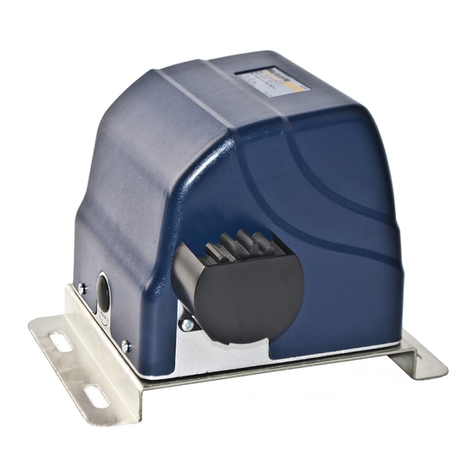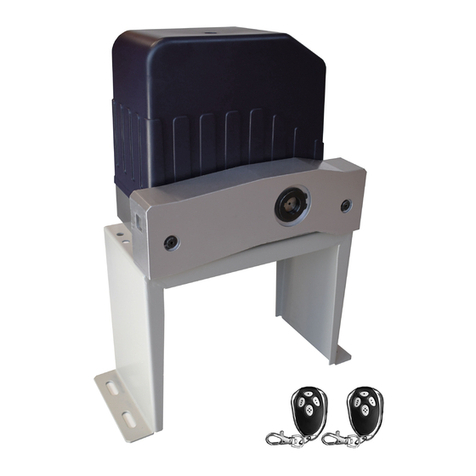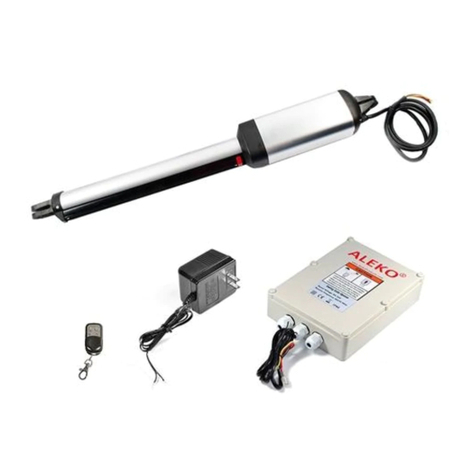`
2
Safety Installation Information
1. READ and FOLLOW all instruction.
2. The gate opener is intended for use with Class I vehicular swing gates.
Class I denotes a vehicular gate opener (or system) dwellings, or a garage or parking area
associated therewith.
Install the gate opener only when the opener is appropriate for the construction and the usage class
of the gate.
3. Gate opening system designers, installers and users must take into account the possible hazards
associated with each individual application. Improperly designed, installed or maintained systems
can create risks for the user as well as the bystander. Gate system design and installation must
reduce public exposure to potential hazards. All exposed pinch points must be eliminated or
guarded.
4. A gate opener can create high levels of force during normal operation. Therefore, safety features
must be incorporated into every installation. Specific safety features include safety sensors.
5. The gate must be properly installed and work freely in both directions prior to the installation of the
gate opener.
6. The gate must be installed in a location so that enough clearance is provided between the gate and
adjacent structure when opening and closing to reduce the risk of entrapment. Swinging gates shall
not open into public access areas.
7. The opener is intended for use only on gates used for vehicles. Pedestrians must be supplied with a
separate access opening. The pedestrian access opening shall be designed to promote pedestrian
usage. The pedestrian access shall be located such that persons will not come in contact with the
moving vehicular gate.
8. Pedestrians should never cross the pathway of a moving gate. The gate opener is not acceptable for
use on any pedestrian gate. Pedestrians must be supplied with a separate pedestrian access.
9. For an installation utilizing non-contact sensors (safety sensors), see product manual on the
placement of non-contact sensors (safety sensors) for each type of application.
a. Care shall be exercised to reduce the risk of nuisance tripping, such as when a vehicle trips the
safety sensor while the gate is still moving.
b. One or more non-contact sensors (safety sensors) shall be located where the risk of entrapment of
obstruction exists, such as the perimeter reachable by a moving gate or barrier.
10. Never mount any device that operates the gate opener where the user can reach over, under,
around or through the gate to operate the controls. Controls are to be placed at least 6’ (1.8m) from
any part of the moving gate.

































